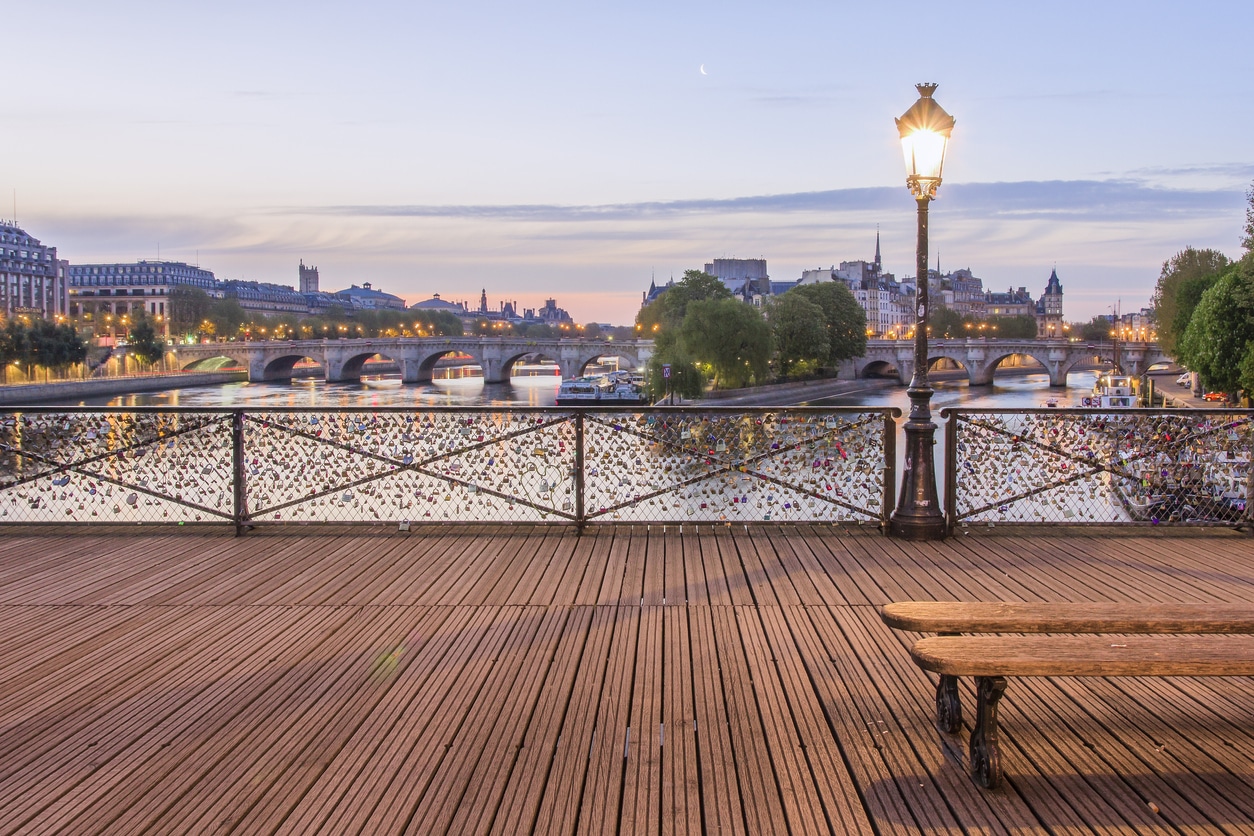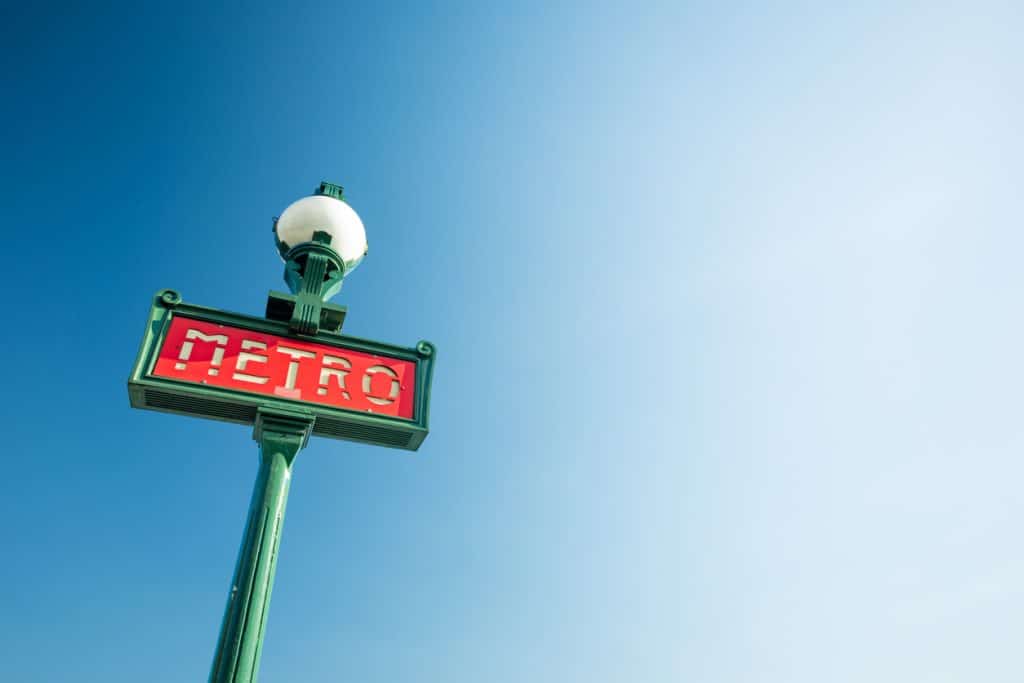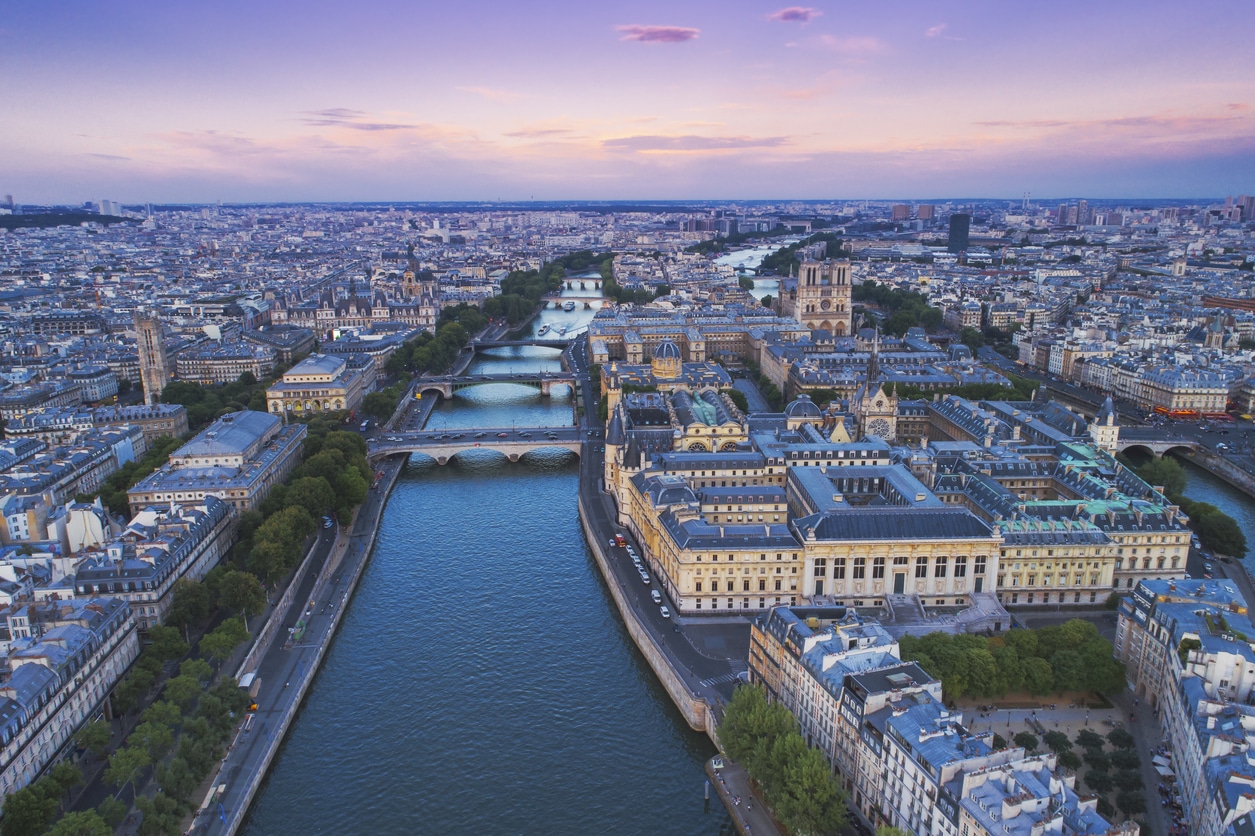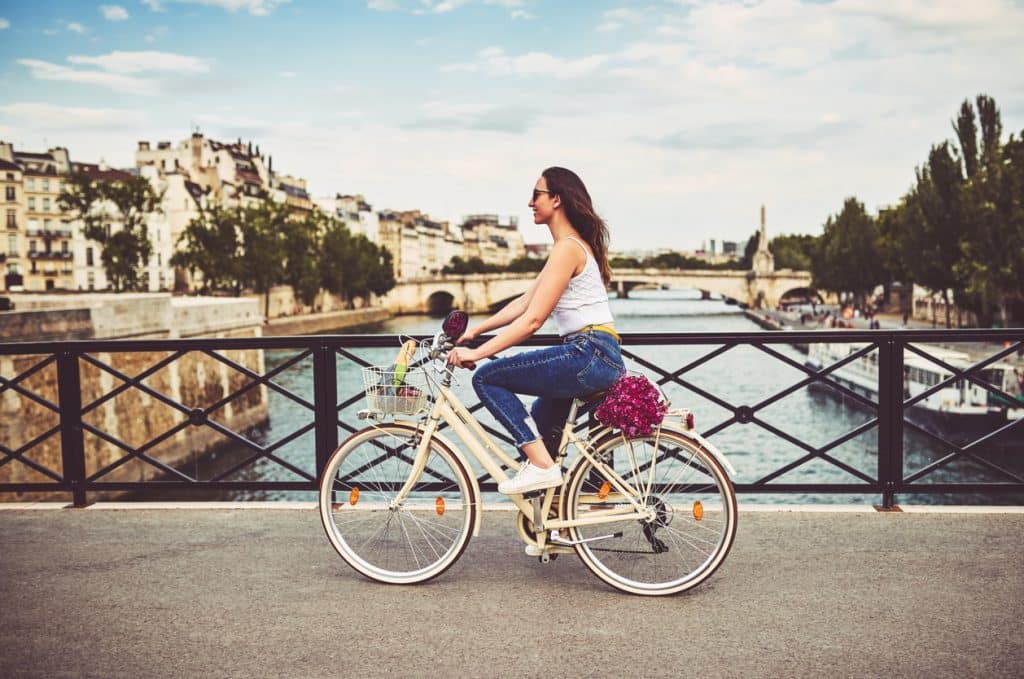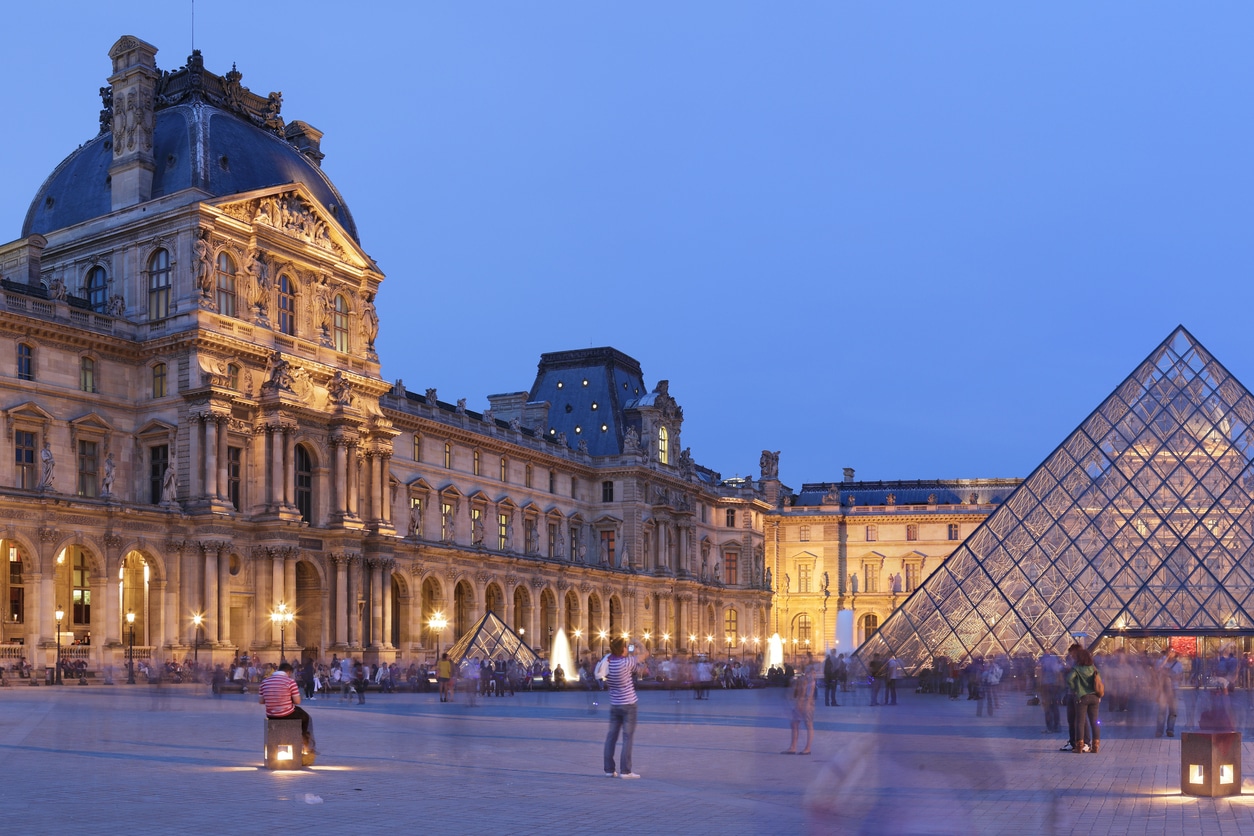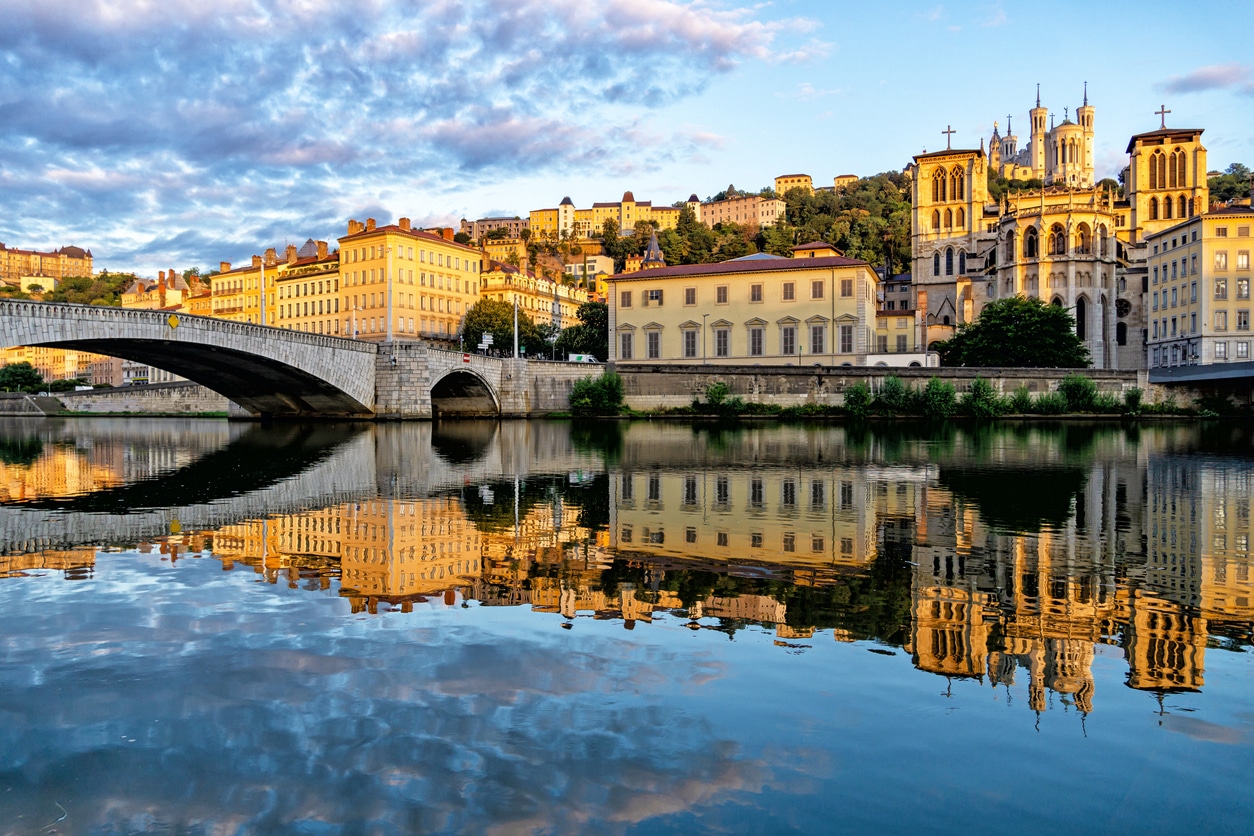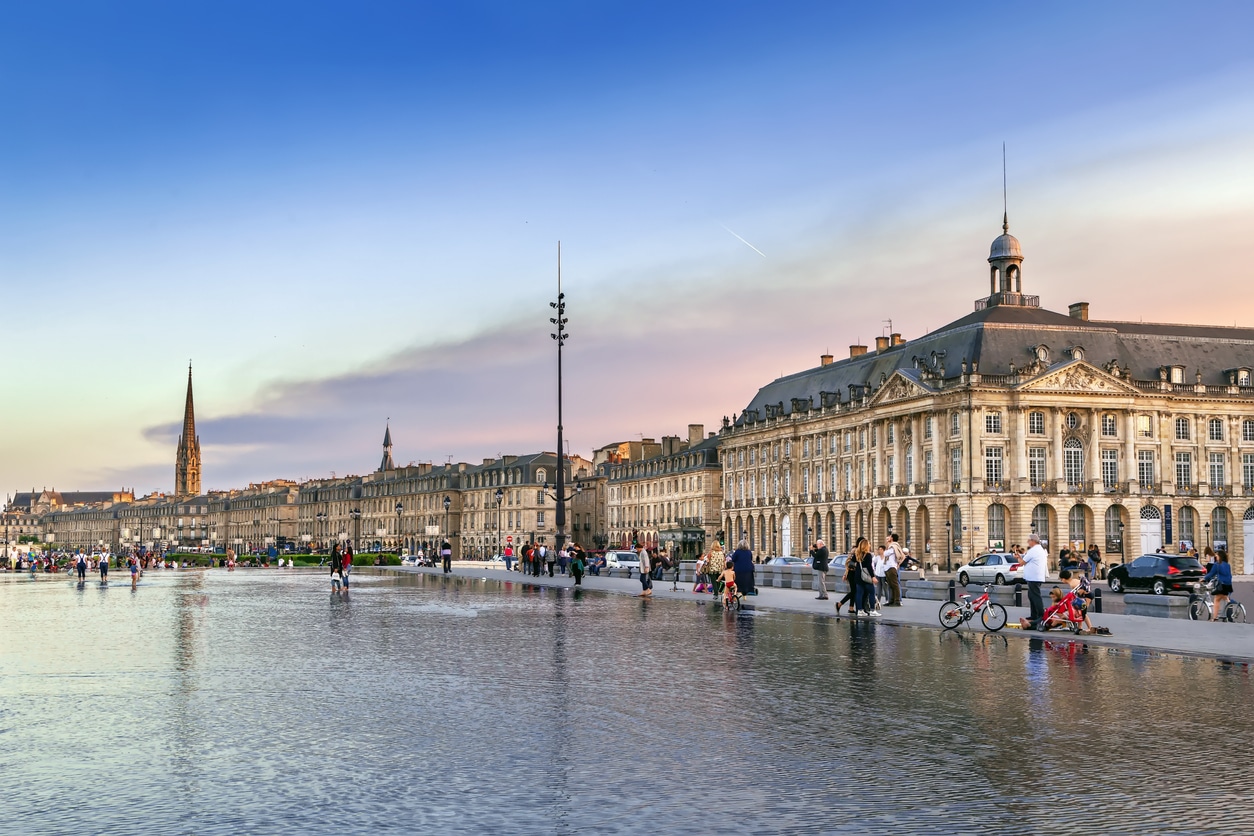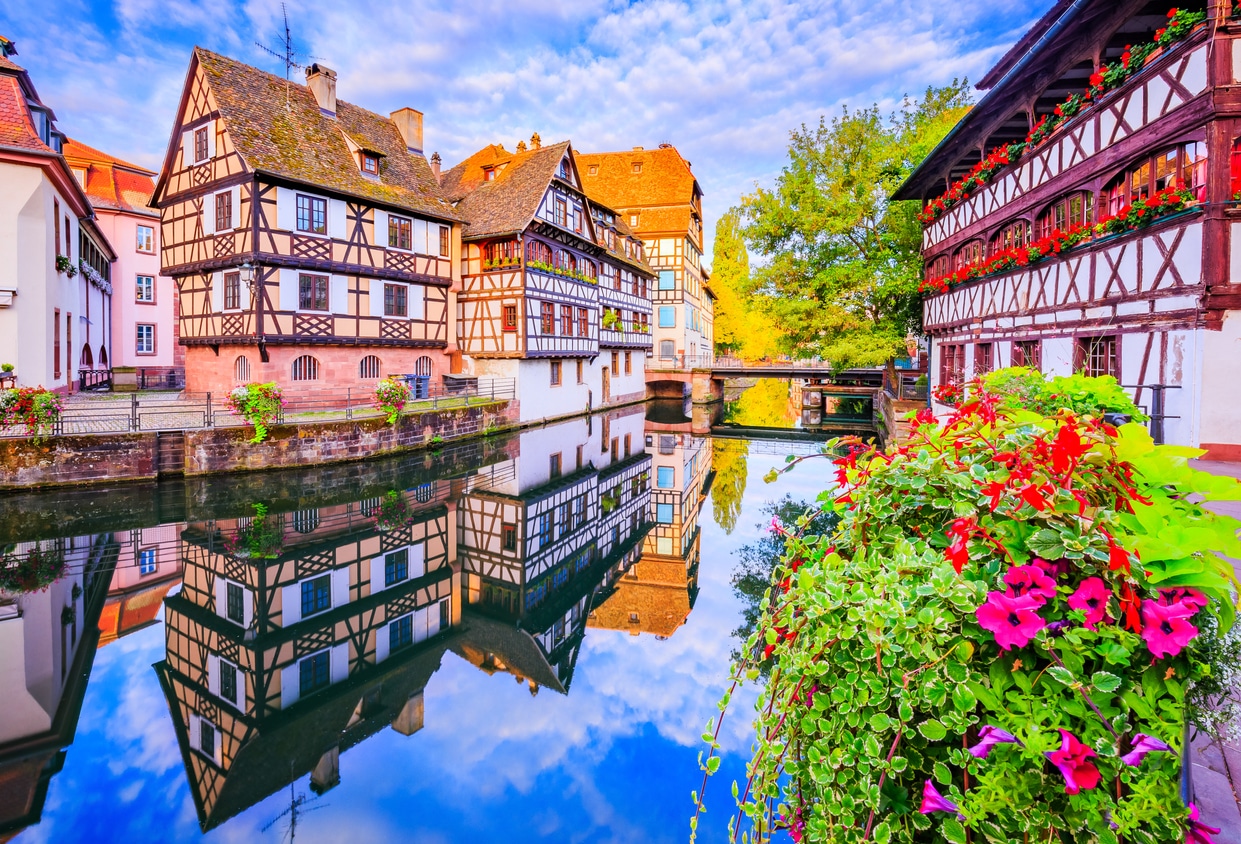Visiting Paris: what to know before you go
The capital of France, Paris is one of the most important and influential cities in Europe. City of light, city of art, love, fashion, gastronomy, and a lot more, Paris is one of the most touristy capitals in the world. Indeed, it attracts an average of 11.5 million visitors each year. With its grand boulevards lined with Haussmannian buildings, its paved streets, its Eiffel Tower, its bookstalls along the Seine river, its museums, its cafes, its nightlife, and its parks, Paris is a city that makes everyone dream. But to make the most of your stay in Paris, it’s important to do a little planning. Below, you will find some tips and advice for preparing for your trip and enjoying this beautiful city at its best.
Formalities and things to know to prepare for your stay in Paris
Before listing the things to do in Paris, there are some administrative formalities to consider to travel to France. Please note that the formalities vary depending on your nationality and the desired duration of your stay. Before crossing the border, it is imperative to check the current applicable conditions with the French consular authorities in your country of origin.
What are the arrival procedures in France?
First, regardless of your country of origin, to cross the border, you must have a valid passport or a valid ID card if you reside in one of the Schengen Area countries and/or the European Union.
For travellers from a country outside the Schengen Area, you will need to check whether or not you need a Schengen Visa to enter and freely travel in France for a short stay (maximum 90 days). While some countries, like the United States, Australia, Japan, South Korea, or Mexico, are exempt from the Schengen Visa requirement, other countries require a visa to enter France. If you are unsure, you can check out the France Visa FAQ, which will inform you if you need a Schengen Visa or not.
The Schengen Visa
Suppose you belong to a nationality for which you must obtain the corresponding visa for stays of less than 90 days within the Schengen Area. In that case, you will need to fill out the Schengen Visa application form Cerfa n°14076*04 for arrival in France and submit it to the consular authorities. You will also need the following documents:
- A passport valid for at least 3 months after the visa’s expiry date
- A recent passport photo
- Proof of the purpose and conditions of your stay
- A return ticket
- Sufficient financial means
- Proof of accommodation covering the entire duration of your stay (proof of address, hotel reservation…)
- A travel insurance certificate
Regarding travel insurance, it must include certain guarantees to be valid. Coverage for repatriation at actual costs, medical assistance in case of emergency, including hospitalisation up to a minimum of 30,000 euros, and civil liability coverage are mandatory. The duration of your insurance coverage must correspond to the duration of your stay within the Schengen Area.
Depending on the country where you submit your application, you should apply for your Schengen Visa no earlier than 3 to 6 months before and no later than 15 calendar days before the planned travel date. You must allow sufficient time for obtaining a visa appointment. We recommend you to check the information for making an appointment on the French consulate website of the country you will be travelling from.
After submitting your application, you will generally have to wait an average of 10 to 15 days to receive a response from the consular services. However, please note that waiting times may vary by country and can be extended during peak periods. Therefore, we recommend that you anticipate these administrative procedures sufficiently.
Important point: the cost of the Schengen Visa for France during the 2024 Olympic Games is €80 for travellers over 12 years old. It is €40 for a child between 6 and 12 years old and free for children under 6 years old. The Schengen Visa is also free for spouses of French nationals, as well as family members of EU-Schengen nationals.
Tip: Before making any purchases, make sure that your travel insurance, return ticket, and reservations are cancelable in case of visa refusal.
Health coverage
For European Union and United Kingdom citizens, remember to apply for your European Health Insurance Card (EHIC) before you travel. This card will allow you to have your medical expenses covered or reimbursed upon your return. Please note that depending on the legislation and formalities in force in the country of your stay, the reimbursement procedures for medical care may differ.
In general, it is imperative, before coming to France, to check if your existing insurances cover incidents or accidents abroad, up to what amount, and what the modalities are (direct coverage of hospitalisations, 24/7 assistance platform available, etc). If this is not the case, or the coverage is limited, you should complete your protection with a travel insurance to cover unexpected events. This way, you will have peace of mind during your stay.
How to get around in the Paris region?
Getting around Île-de-France (Paris Metropolitan Area) via the public transport network is relatively simple. The network is well-developed and allows you to travel from one place to another, almost anywhere in the region, by combining different means of transport such as the metro, the RER (regional express network) and/or the bus. In 2021, the network of metro, bus, tram, and RER represented more than 380 lines, 900 km of tracks (excluding buses), and 6,000 stops, stations, and platforms !
You will notice that the Parisian network is divided into 5 large zones and that the ticket prices vary depending on the departure and arrival zones. If you arrive at one of the two major Parisian airports, Roissy-Charles de Gaulle or Orly, you will arrive in zone 5. When you purchase your RER ticket to reach the center of Paris, make sure to get a ticket for all zones. If you are not sure what or how to purchase a ticket, don’t worry, there are agents at the train stations to guide you! They are usually dressed in a blue jacket and they will be happy to help you. Do not buy your ticket from just anyone, as the ticket will not be valid in case of inspection by RATP agents and you may end up paying more than the initial price.
Once you arrive in the center of Paris, a metro ticket to travel within the city center will cost you €2.10 for one hour. If you plan on exploring Paris and its surroundings, we highly recommend getting the “Paris Visite” pass, which will give you access to all transportation networks (metro, tram, bus, RER…) for 1, 2, 3, or 5 consecutive days. In short, all you need to do is get a map of the Paris metro and get started!
You should note the prices of metro tickets will increase during the 2024 Olympic Games, so it can be interesting to opt for a “Paris 2024 pass” for the price of €16 per day or €70 for the week. The regular metro ticket will be sold at €4 each.
If you prefer to take a taxi to get around Paris, make sure to take an approved vehicle. There are a few things to know before getting into a Parisian taxi to avoid scams. Whether it’s on the street, at a train station, or at an airport, never respond to direct solicitations. It’s always the customer who goes to the taxi, not the other way around. If you let yourself be convinced by this kind of solicitation, you may end up paying a lot for your ride. How to recognise a real Parisian taxi? Taxis are usually equipped with a light on the roof, a taximeter to calculate the fare, and a license plate number on the right wing of the taxi. It’s also worth noting that the Uber app is widely used for transportation in Paris.
For the most athletic among you (after all, it’s the Olympics!), or simply for the pleasure of strolling through the streets of Paris, walking and cycling are the best ways to enjoy the city.
Where to stay in Paris?
While the possibilities are numerous, the answer mostly depends on your budget and the desired location of your accommodation. If you’re travelling on a small budget, consider booking as far in advance as possible and prioritise slightly less touristy neighborhoods – or even the suburbs! As you move away from the center of Paris, accommodations usually become more affordable.
While the City of Light has beautiful hotels and wonderful bed and breakfasts, to reduce costs, consider renting rooms from locals, staying at youth hostels, or even doing a home exchange. These are generally more economical alternatives and can be quite charming. However, be aware that prices are likely to soar during the entire period of the Olympic Games. After all, Paris is expecting no less than 15 million visitors next summer.
If you don’t mind staying outside of Paris, trains will allow you to reach nearby cities in a short time. With its seven train stations, Paris allows you to connect to major cities in the surrounding area in about an hour, and therefore find cheaper accommodations. This is the case for Orléans, located an hour away from Paris by train from Austerlitz station, Chartres, an hour away by train from Montparnasse station, as well as Lille, one hour away by train from Gare du Nord, and Reims, less than an hour away by train from Gare de l’Est. As you can see, if finding accommodation in Paris proves to be difficult and expensive, moving further away could help you find what you’re looking for. Plus, travelling to one of these cities is sometimes quicker than going to the Parisian suburbs!
Tips for enjoying Paris safely
Is Paris a safe city? Well, yes it is, but as any city in world, it is not exempt of certain risks, such as theft, as well as some tourist traps.
As in any major city, pickpockets operate in tourist areas, so stay vigilant and keep your belongings in closed bags. Avoid being tempted by a miniature Eiffel Tower offered by a street vendor, as you may end up paying much more than in a store. Avoid playing the shell game, you most likely lose a lot of money. Also, people may approach you asking to sign a petition for a “good cause” and end up asking for money. If someone offers a free bracelet, politely say “no thanks”. In short, stay cautious, clear-headed, and don’t blindly trust people who approach you!
We also recommend noting down useful emergency numbers, as well as the address of the embassy or consulate of your country of residence in Paris. Consider making a digital copy of your identification documents. And of course, for a more peaceful stay, get travel insurance and keep your certificate at hand, as you know that in case of a serious problem, you will be assisted.
Paris and the Olympic Games
After the ban of the Greek Olympic Games by the Romans in 393 BC, it would take until 1896 for the Olympic flame to shine again. And it was thanks to a Frenchman: Baron Pierre de Coubertin, an educator and historian credited with the famous motto “The most important thing is not to win but to take part.” It was he who took matters into his own hands and invited all the important figures in the world of sports to an Olympic congress on June 23, 1894, in Paris. Two years later—on April 6th 1896—the first modern Olympic Games took place at Athens.
Intimately linked to France, thanks to Pierre de Coubertin’s initiative, the second edition of the Olympic Games took place in Paris in 1900. The event lasted over five months, from May to October, and was integrated into the Universal Exposition to attract a larger crowd. These first Olympic Games brought together 997 athletes – including the first 22 female athletes – from 24 different countries. Charlotte Cooper made history at the 1900 Olympics by winning the first Olympic gold medal for women in singles tennis.
Six Olympic Games later, from May 4 to July 27, 1924, the Olympic Games returned to Paris, and they gained even more magnitude! During this edition, there were 17 sports on the Olympic program, with a total of 126 events. Over the course of four months, 3089 athletes – including 135 women – from five continents competed under the Olympic motto “Citius, Altius, Fortius” (Faster, Higher, Stronger).
The 1924 Paris Olympics also marked the first time an Olympic Village was built. Constructed in Colombes, near the stadium, it consisted of wooden accommodations with three beds each. Athletes shared showers, sinks, and dining rooms. The village offered some services to athletes, such as a hair salon, a kiosk, and a currency exchange office. The Olympic Village was completely after the end of the 1924 Olympics – unlike its successors.
But, as you can imagine, Paris does not intend to stop there. For the 2024 Olympics, the French capital aims to break new ground once again. The City of Light has taken on the challenge of organising carbon-neutral Games and the first gender-equal games. In fact, during the summer of 2024, 5250 women are expected to participate, representing 50% of the total number of athletes.
What to do in Paris?
As you know, the “capital of Love” is full of treasures: monuments, museums, restaurants, walks, shopping… But what should you really do in Paris?
Strolling through Paris and its monuments
Whether you follow the footsteps of Emily In Paris, the walks imagined by the Paris Tourist Office, or float along the Seine on a Bateau-Mouche, visiting the City of Light is, above all, about marvelling at its historic buildings.
Where to start? Where to wander in Paris? Which neighborhood should you absolutely visit? We’ll tell you everything! Keep reading…
While there are many paths and means to visit Paris, here is a list of historical monuments that we recommend you see with your own eyes at least once in your life:
- The Eiffel Tower
- Notre-Dame de Paris
- The Montparnasse Tower
- The Champs Elysées
- The Basilica of the Sacré-Cœur
- The Arc de Triomphe
- The Centre Pompidou
- The Pantheon
- The Conciergerie
- The Grand Palais
- Père Lachaise Cemetery
- The Louis Vuitton Foundation
- The Paris Opera
Of course, this is far from being an exhaustive list, and each traveller can add to it according to their preferences. Every landmark list should be completed with the visit to the must-see neighbourhoods of Paris, such as Le Marais, Montmartre, but also the Bastille district (home to Rue Crémieux, the most colourful street in Paris), the Latin Quarter, the Île de la Cité, or the privileged neighbourhood of Saint-Germain-des-Prés.
Visiting Paris museums
As a city of art and culture, Paris is home to many museums that will delight both young and old travellers. Paris is home to a wide range of museums, making it one of the world’s greatest cultural capitals. Whether you’re interested in painting or sculpture, photography or history, contemporary art or science—and even cinema!—there’s something for everyone!
The Louvre, the largest museum in the world with around 38,000 works, remains the must-visit museum in Paris. For lovers of Impressionist paintings, we highly recommend visiting the Orangerie and the Musée d’Orsay. But if you prefer to discover Picasso’s works, you must visit the museum dedicated to him. If you love sculpture, the Rodin Museum – and its incredible garden – is a museum you must absolutely visit.
Are you passionate about history? Then don’t miss the Palace of Versailles and its iconic Hall of Mirrors. If you are more of a scientific type, spend an afternoon at the Cité des Sciences et de l’Industrie or at the Palais de la Découverte. Are you a fan of modern art? No problem, visit the Palais de Tokyo, the Centre Pompidou, or the Louis Vuitton Foundation. But if you are more of a paparazzi type, do not forget to visit the Musée Grévin wax museum, where you can take photos of your favourite stars!
To ensure you don’t miss any exhibitions or museums you absolutely want to visit, booking your tickets in advance on the Paris Musées website is recommended to guarantee access to the exhibition you want to see. This advice will be truer during the summer of 2024, when the expected tourist influx for the Olympic Games is expected to be stronger than usual.
Also, note that some Parisian museums are free at certain times of the year – especially on the first Sunday of each month. This is a handy tip for those who want to educate themselves without blowing their travel budget.
Eating: French must-try dishes
Visiting Paris is one of the best ways to immerse yourself in French culture, but tasting some typical dishes is undoubtedly the best way to fall in love with France. So… what to eat in Paris?
Beyond the traditional baguette or croissant, the great classics of French cuisine will continue to tantalize your taste buds: croque-monsieur, veal blanquette, pot-au-feu, beef bourguignon, onion soup, coq au vin, shepherd’s pie, frog legs, snails with garlic and parsley butter…
If you want to experience life as a Parisian, you’ll have to sit on a terrace to sip your coffee or enjoy your brunch.
On a beautiful sunny day, don’t let the opportunity to picnic in a park pass you by. The Tuileries Gardens, the Jardin des Plantes, the Buttes-Chaumont Park, the Parc des Sceaux, or the Parc Montsouris have large green spaces waiting for you to lay your picnic blanket down!
Disneyland Paris
Whether you are in France to enjoy the 2024 Olympic Games or simply to visit Paris, there is an unmissable place not far from the capital that will delight both young and old alike. Easily accessible by public transport from the centre of Paris, Disneyland Paris will immerse you in a timeless world that will fill your eyes with stars. With its attractions, iconic characters, and unforgettable shows, you will not be disappointed with your visit to one of the most magical places in Paris.
If you want to experience a Parisian fairy tale, remember to book your tickets for Disneyland Paris in advance. Indeed, Eurodisney’s two theme parks attract between 8 and 10 million visitors each year, so don’t wait until the last minute!
Three must-see destinations within 2 hours by train from Paris
Which city should you visit near Paris? Do you want to take advantage of your visit to the French capital by exploring other beautiful cities in France? Here are some ideas for places that can be easily reached from Paris via train.
Lyon: capital of Gaul
Located two hours by train from Paris, Lyon is the third largest city in France. With over 2,000 years of history, Lyon is France’s second most popular tourist destination, and it’s easy to see why! With its unique architecture, the historic centre of Lyon was classified as a UNESCO World Heritage site in 1998. From the Basilique Notre-Dame de Fourvière to its majestic squares like Place Bellecour and Place des Terreaux, as well as its traboules, Lyon is a city worth visiting.
Lyon is also known for its generous traditional French cuisine, which you can discover in the “bouchons lyonnais” (quenelle, rosette, coussins de Lyon…), as well as at the Halles Paul Bocuse, which is a true institution. After enjoying one of its specialities, we recommend taking a digestive stroll in the Parc de la Tête d’Or. And if you happen to be there during the 2024 Olympics, know that Lyon will host some of the football events in its Groupama Stadium!
Bordeaux: city of wine
Just two hours by train from Montparnasse station, Bordeaux shines throughout France and the world thanks to its wine heritage. But beyond its vineyards and art of living, Bordeaux is also known for its heritage that oscillates between history and modernity. In the heart of Bordeaux’s city centre, historic buildings coexist with contemporary masterpieces like the famous City of Wine and the Bassins de Lumières.
By boat on the Garonne River, by bike or on foot, stroll along the quays or on Rue Sainte-Catherine – the longest shopping street in Europe – at your own pace. Whether culinary (don’t leave without tasting the famous “canelé”, a small cake flavoured with vanilla and rum) or cultural, Bordeaux promises to impress you… And that’s without saying that the city also has the world’s largest water mirror – a dazzling sight, especially at sunset!
Strasbourg: European capital
Located less than 2 hours by train from the Gare de l’Est, Strasbourg is one of the most cosmopolitan cities in France. With its traditional half-timbered houses, its romantic Petite France district classified as a UNESCO World Heritage site, and its imposing cathedral, Strasbourg is not just about its traditional Alsatian Christmas market. Rest assured, Christmas market or not, it will be easy for you to find a place to eat an iconic Bretzel, a flammekueche, or a choucroute!
More than just a historic city, Strasbourg is also a modern city. As a European city, it is home to the European Parliament in a district that is far from picturesque but remains impressive in terms of modern architecture. As you can imagine, Strasbourg is a multicultural symbol oscillating between a romantic gem and European power. Strasbourg is, in fact, the birthplace of the French national anthem. It was in April 1792 that Claude Rouget de Lisle, an officer stationed in Strasbourg, composed La Marseillaise following France’s declaration of war against Austria.
There you have it; you now have some keys to organise an unforgettable Paris stay and enjoy its surroundings. From essential documents to must-visit monuments and dishes to taste, all that’s left is to book your tickets to Paris to experience the excitement of the City of Light!


